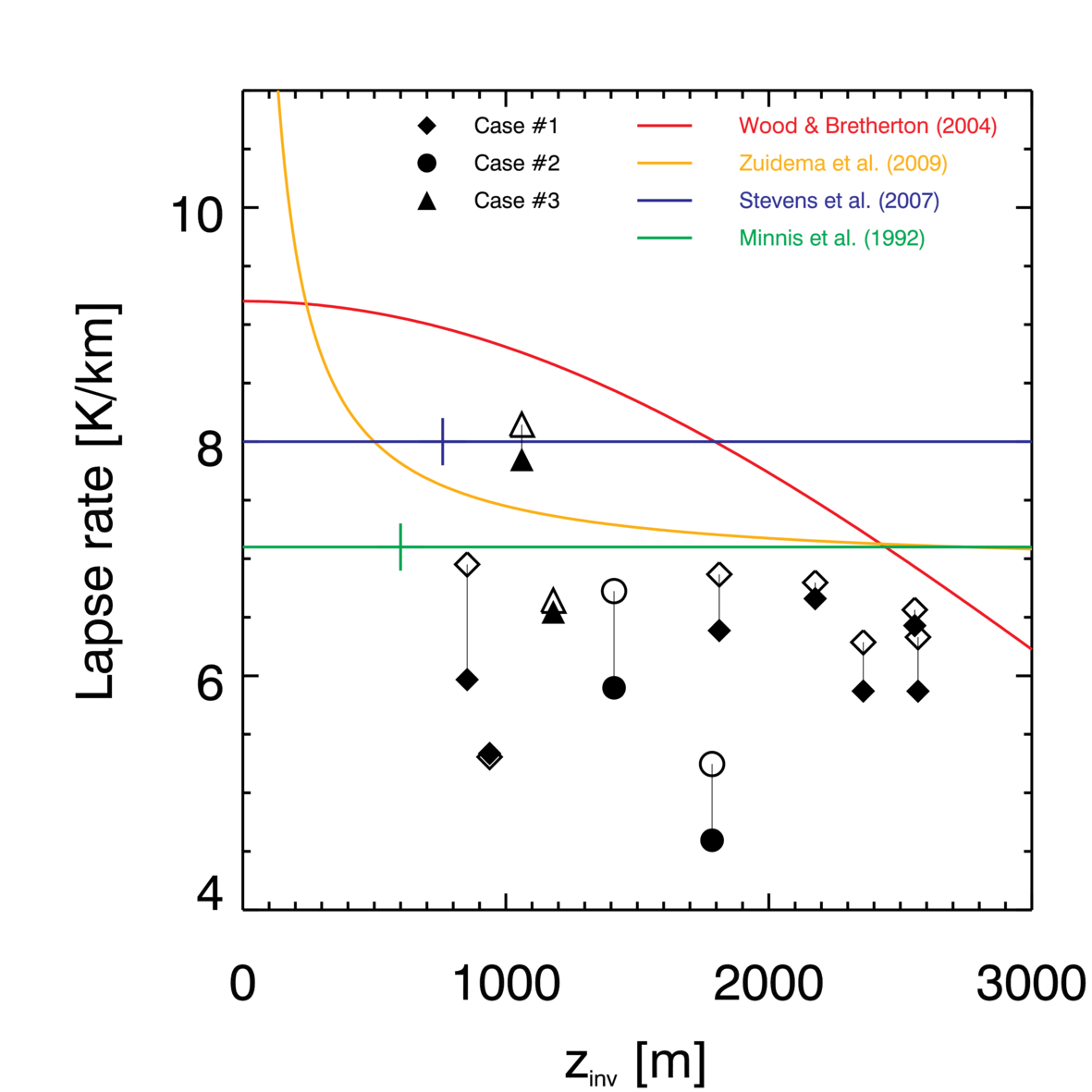Episodes of warm‐air advection causing cloud‐surface decoupling during MARCUS
Submitter
Zheng, Youtong — University of Houston
Area of research
Cloud Processes
Journal Reference
Science
Ship observations show that marine clouds can be highly detached from the underlying sea surface fluxes if the clouds move from warm to cold water.
Impact
The conventional idea suggests that marine stratiform clouds can become decoupled from the surface forcing if they are advected from cold to warm water, a mechanism called "deepening-warming" decoupling. This study shows that if clouds are advected from warm to cold water (an opposite situation), the cloud-surface decoupling can be much stronger.
Summary
It has been known for decades that advection of a cloud-topped marine boundary layer (CTBL) over warmer sea surface causes the stratification (or decoupling) of the CTBL via the entrainment feedbacks, a mechanism commonly known as “deepening-warming” decoupling that is typical in subtropics. This study focuses on the opposite direction of advection, i.e., low-level warm air advection (LLWAA), and its impacts on the decoupling degree of a CTBL. Our hypothesis is that LLWAA stabilizes a CTBL, causing a decoupling of the CTBL. It is tested for three LLWAA episodes observed during the MARCUS field campaign. By synthesizing the shipborne measurements, satellite imagery, and reanalysis data, four common characteristics of CTBLs under the LLWAA are found: (1) CTBLs are highly stratified to the extent that penetrations of cumulus into main temperature inversions, which are common for subtropical decoupled CTBLs, do not exist; (2) sea surface temperature is 1 ~ 2 K lower than the near-surface air temperature; (3) clouds manifest stratiform with lifetime as long as several tens of hours; and (4) they locate in warm sectors of middle-latitude cyclones. Lapse rates of the decoupled CTBLs are markedly lower than those commonly used for passive satellite estimation of cloud top heights.



